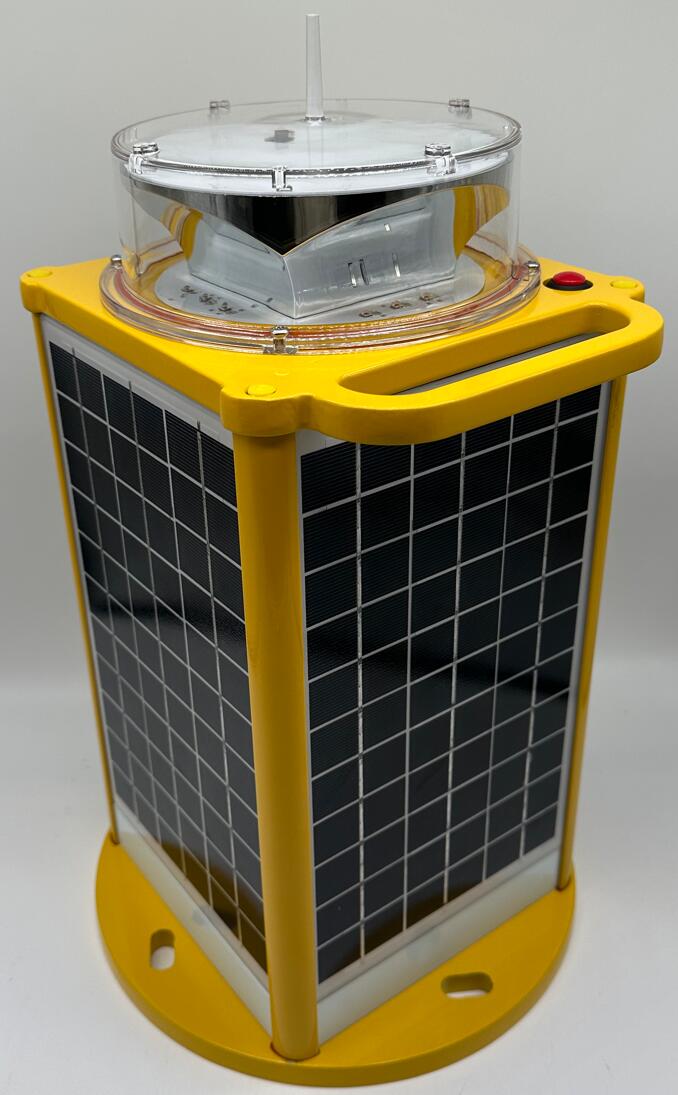
In the vast expanse of the aviation world, safety is of paramount importance. Among the various safety measures, aircraft warning lights play a crucial role. In recent years, solar powered aircraft warning lights have emerged as a remarkable innovation, revolutionizing the way we ensure the visibility and security of aircraft.
Solar powered aircraft warning lights offer several distinct advantages over their traditional counterparts. Firstly, they are environmentally friendly. Traditional warning lights often rely on power sources that may involve the consumption of fossil fuels or the use of batteries that require frequent replacement and proper disposal. Solar - powered lights, on the other hand, harness the abundant and renewable energy of the sun. This not only reduces the carbon footprint associated with aviation safety equipment but also minimizes the long - term costs related to power supply and maintenance.

The design of solar powered aircraft warning lights is ingenious. These lights are equipped with highly efficient solar panels. These panels are carefully engineered to capture sunlight even in less than ideal conditions. They are made from materials that can withstand the harsh environment at high altitudes, including extreme temperatures, strong winds, and potential impacts from debris. The photovoltaic cells within the solar panels convert sunlight into electricity, which is then stored in rechargeable batteries within the light units.
One of the key features of these warning lights is their reliability. In the aviation industry, any failure of safety equipment can have catastrophic consequences. Solar - powered lights have built - in redundancy systems. The stored energy in the batteries ensures that the lights can continue to function during periods of low sunlight, such as during cloudy days or at night. Advanced control systems monitor the battery charge level and the intensity of sunlight, automatically adjusting the brightness of the lights to optimize energy consumption while maintaining sufficient visibility.
solar powered aircraft warning lights
TG66
GH7
665
The application of solar - powered aircraft warning lights is extensive. They are commonly used on the wings and tail sections of aircraft. On small private planes, these lights provide an affordable and efficient way to enhance visibility during takeoff, landing, and in - flight operations. For commercial airliners, they contribute to the overall safety profile of the aircraft, making it more visible to other aircraft in the vicinity, especially during low - visibility conditions like fog or rain. In addition, solar - powered warning lights are also used on unmanned aerial vehicles (UAVs). As the use of UAVs increases in various fields such as surveillance, delivery services, and aerial photography, having reliable and self - sufficient warning lights is essential to prevent collisions with other aircraft or obstacles.
Moreover, solar - powered aircraft warning lights have a positive impact on the maintenance schedule of aircraft. With fewer components that can wear out compared to traditional lighting systems that rely on mechanical or electrical connections with the aircraft's power grid, the need for regular maintenance checks related to the warning lights is reduced. This results in less downtime for the aircraft, increasing its availability for operations and ultimately improving the efficiency of the aviation system as a whole.
In the future, we can expect further advancements in solar - powered aircraft warning lights. Research is ongoing to improve the efficiency of solar panels, increase the energy storage capacity of batteries, and develop more intelligent control systems. For example, new materials may be used to make the solar panels even more lightweight and durable. There may also be integration with other aircraft systems, allowing for real - time monitoring of the warning lights' status from the cockpit.
In conclusion, solar powered aircraft warning lights are a shining example of how innovation can enhance safety and efficiency in the aviation industry. Their environmental friendliness, reliability, and wide range of applications make them an indispensable part of modern aircraft. As technology continues to evolve, these lights will undoubtedly play an even more significant role in safeguarding the skies.